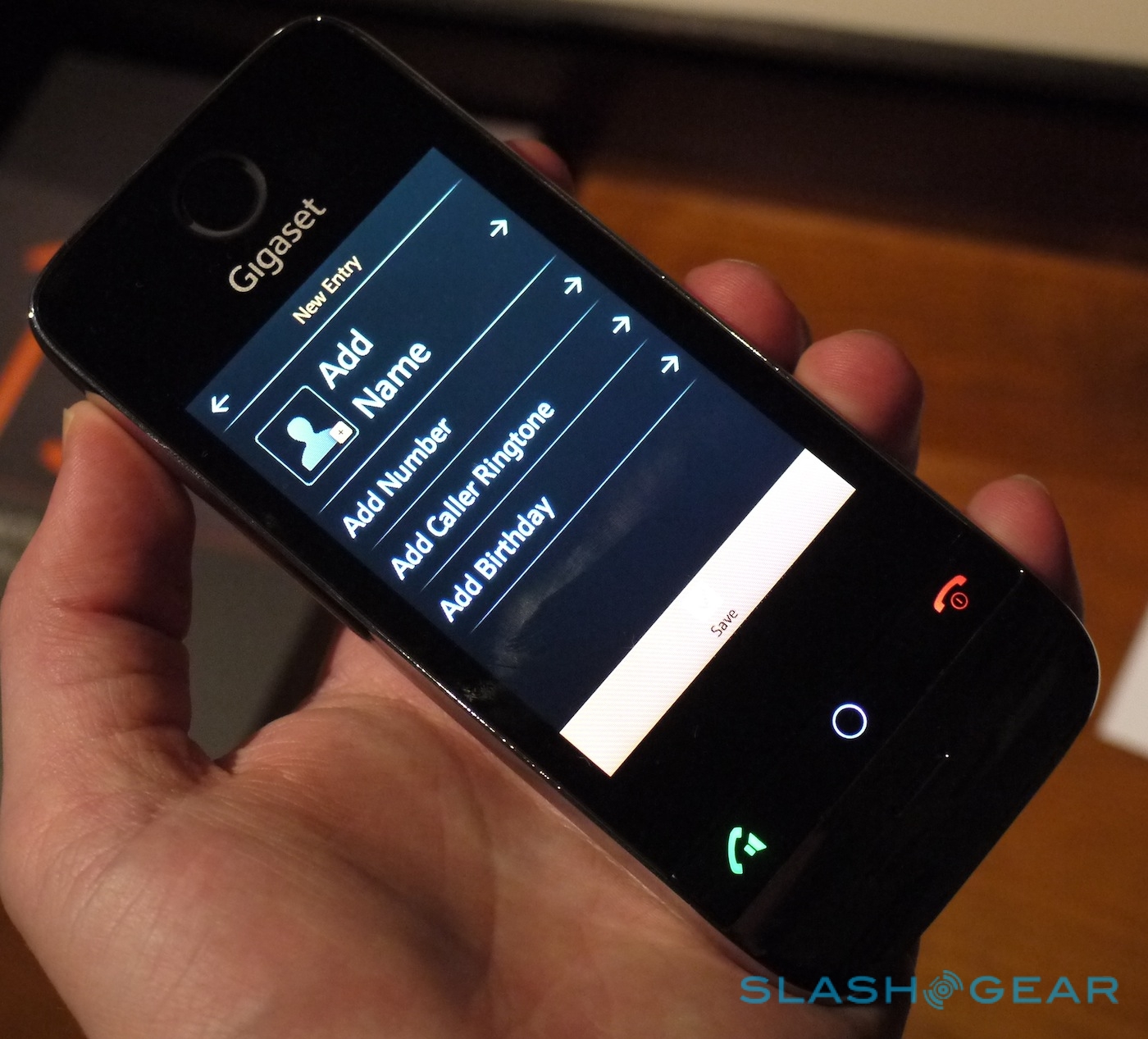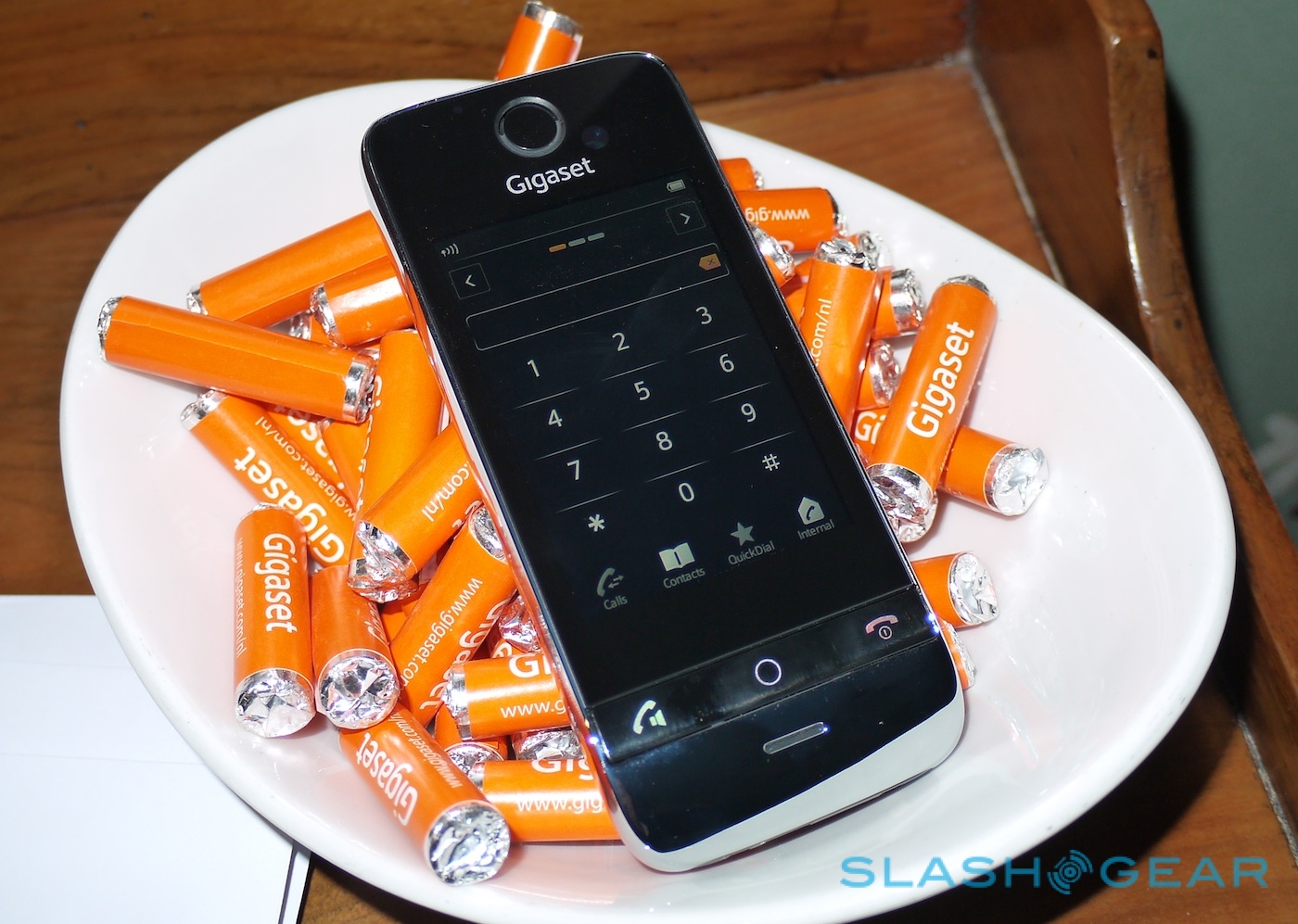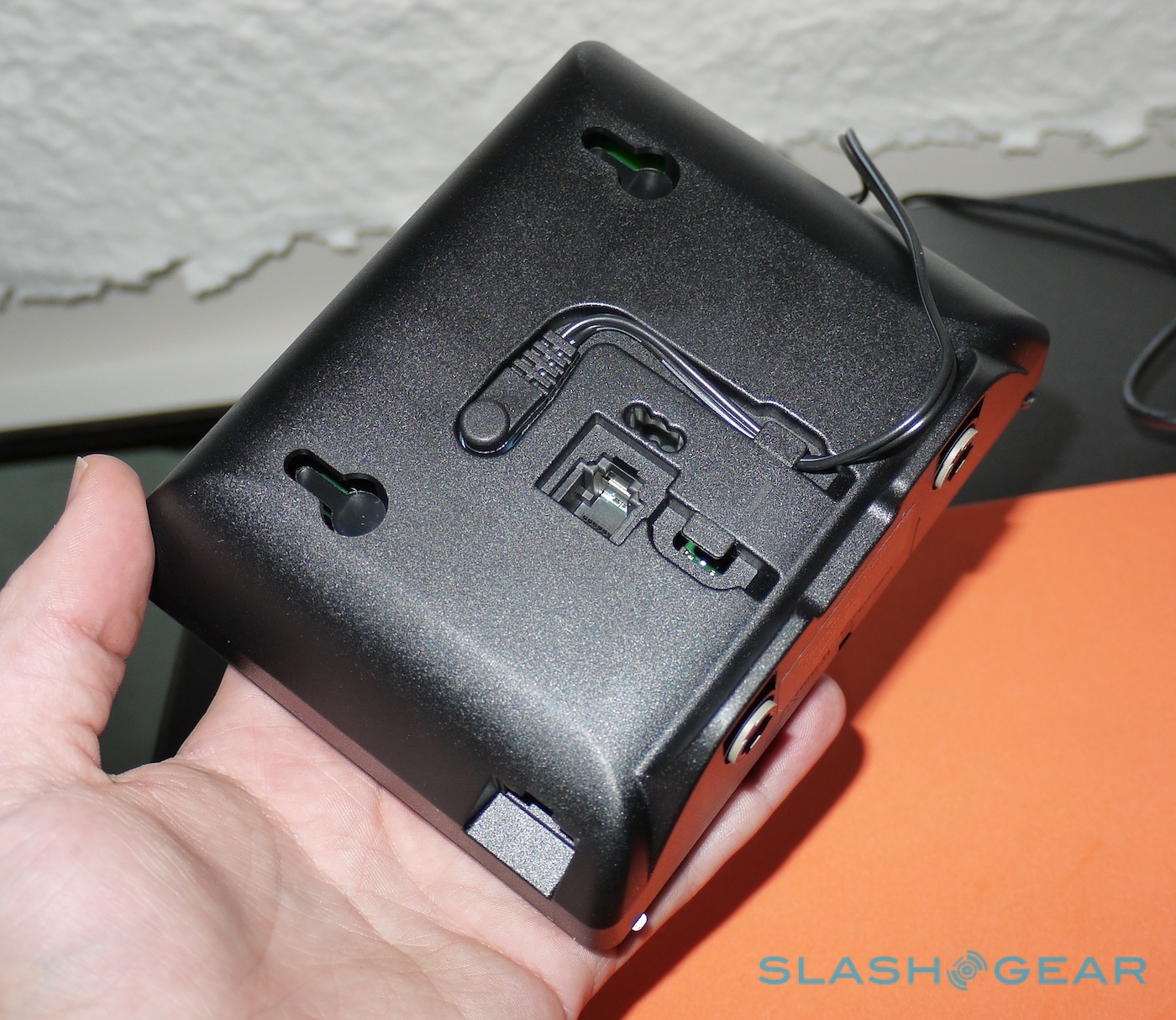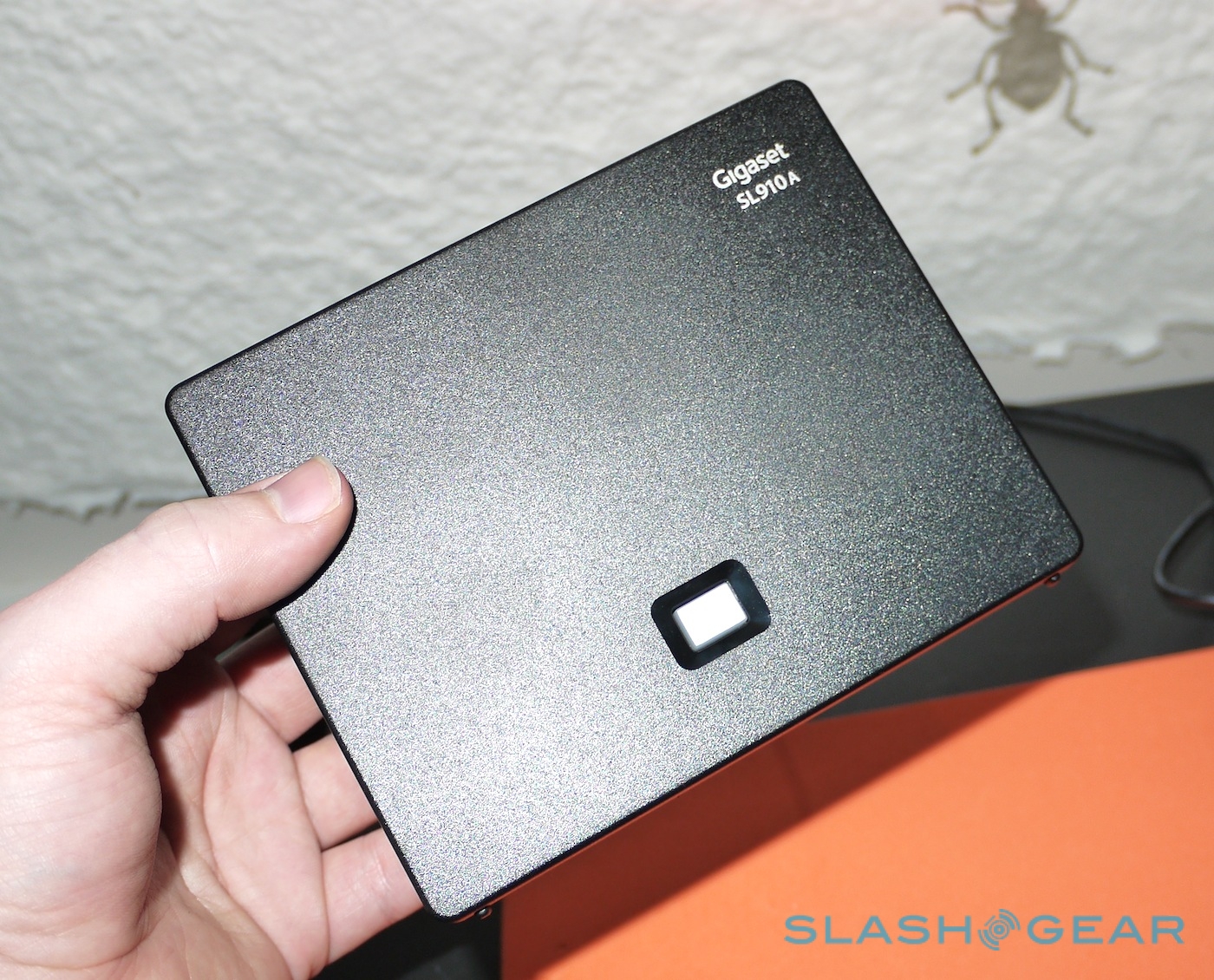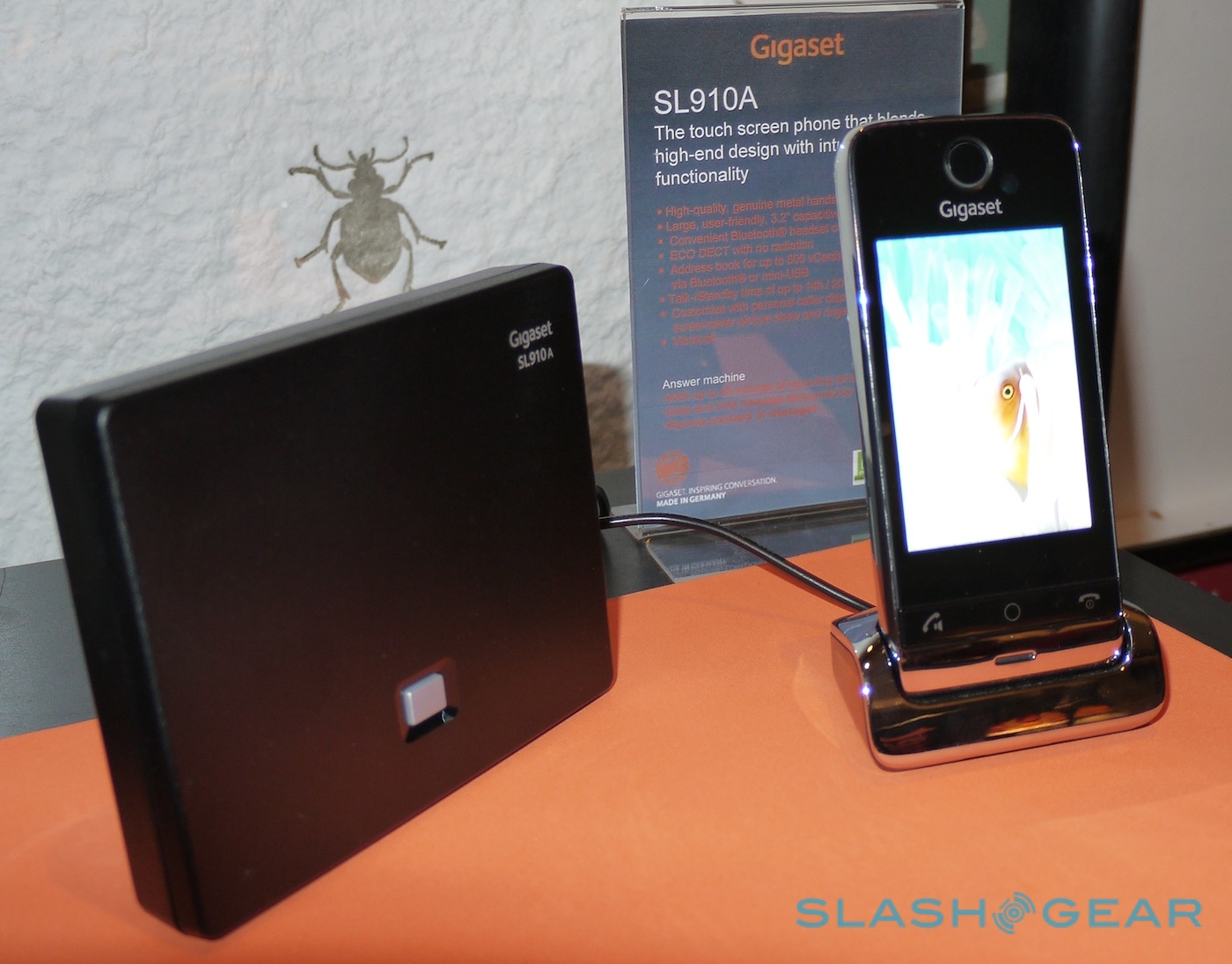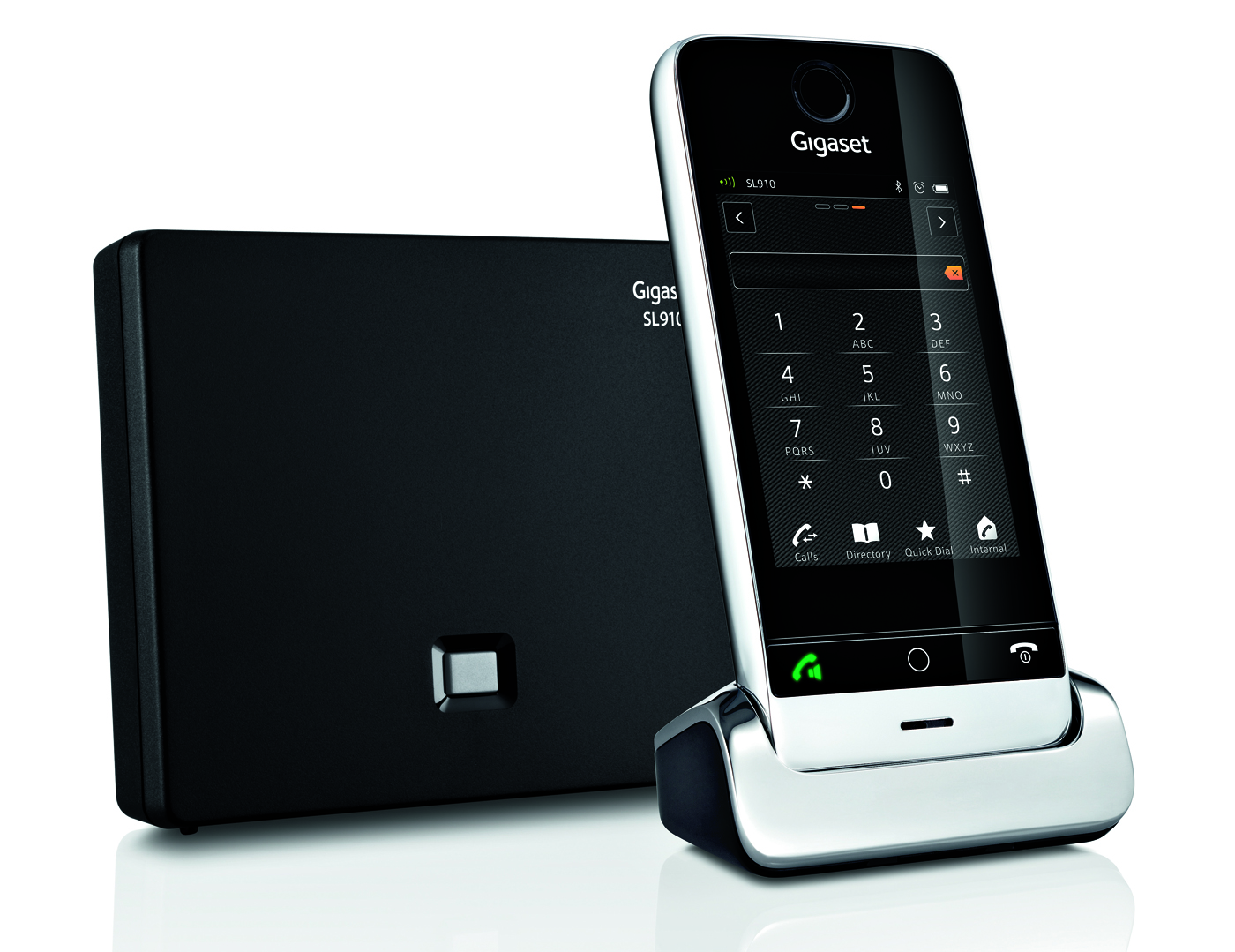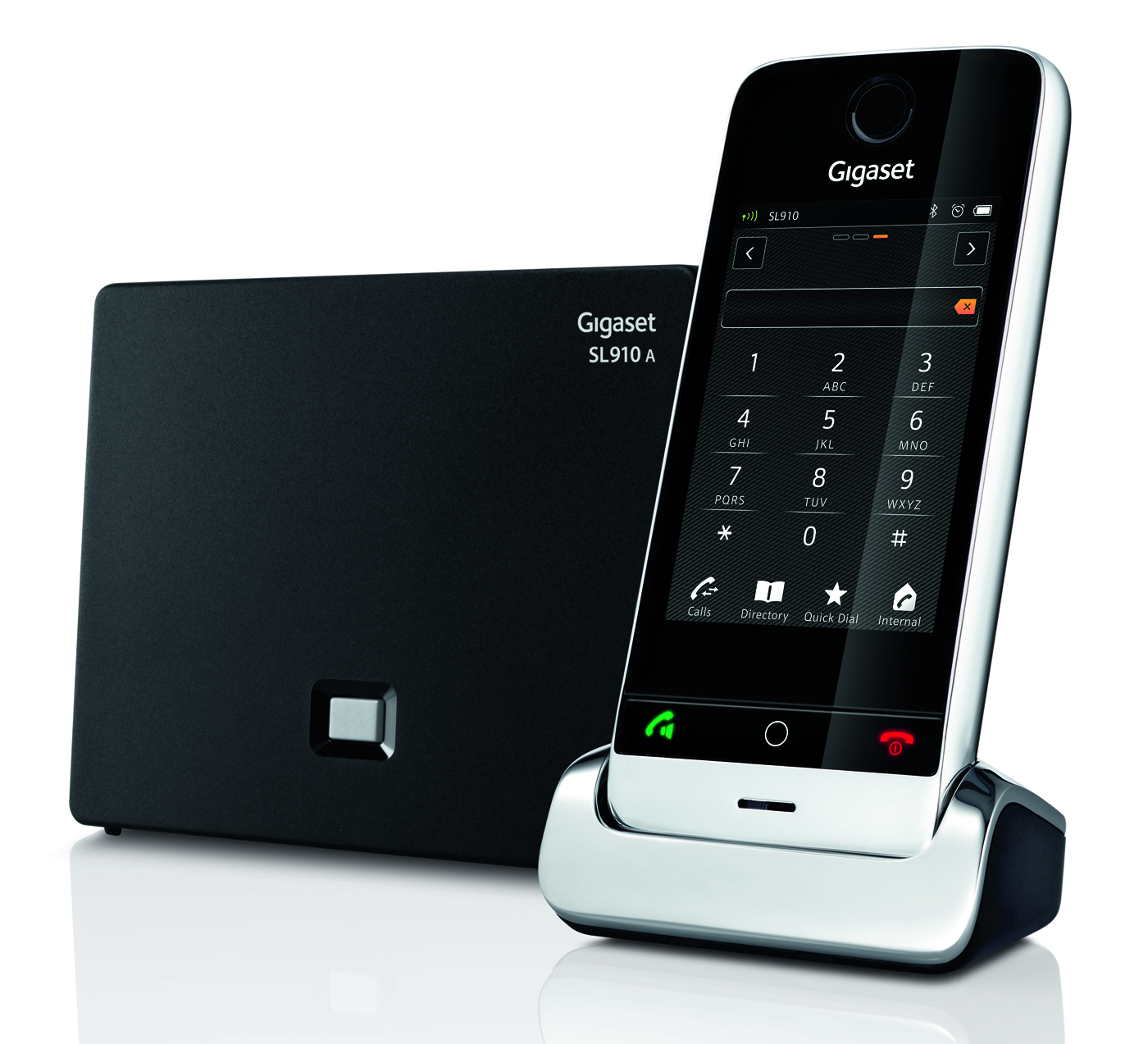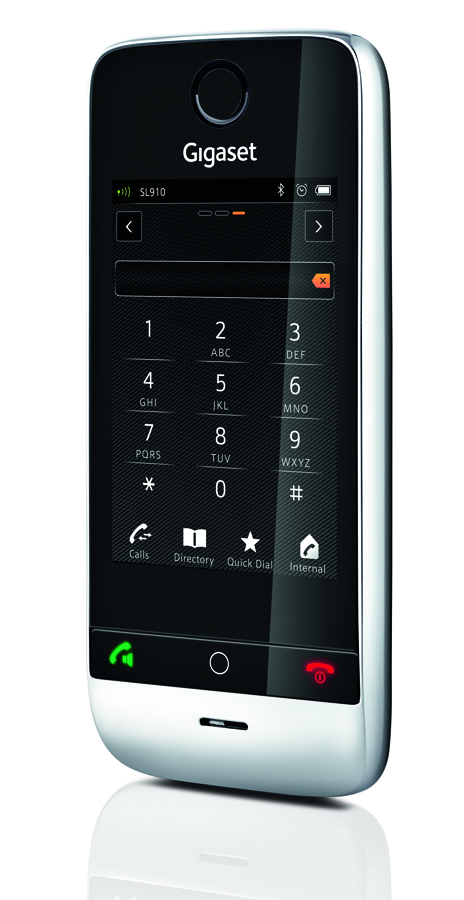Gigaset SL910A Touchscreen DECT Phone Hands-On
Does your landline phone need a touchscreen? German DECT phone manufacturer Gigaset reckons so, and the SL910A is the end result: a 3.2-inch HVGA capacitive touchscreen in a digital cordless phone. Packing Bluetooth, Outlook sync, text messaging and PIM functionality, along with an integrated digital answerphone, the Gigaset SL910A borrows plenty from what we'd expect from a modern cellphone. We grabbed some hands-on playtime to see if it's really the next generation of landlines or simply overkill.
As a DECT handset, the SL910A is reasonably straightforward. A single connection to your landline, support for up to six handsets paired to the same base-station (and GAP compliance so they needn't all be from Gigaset), 55 minutes of digital voicemail recording (plus the ability to record live calls to that memory, though not then offload them to your computer) and an integrated phonebook for up to 500 entries. Rather than punch them all in via the touchscreen you can hook up via USB or Bluetooth to your computer and sync your Outlook address book, complete with contact photos, which will flash up whenever there's an incoming call.
Gigaset SL910A overview:
[vms 33f94c1b7b5cf543ef3b]
Alternatively the Bluetooth can be used to pair a headset and use it hands-free. The SL910A itself is solid – thanks to its metal chassis – but somewhat heavy, and the glass fascia and plastic buttons pick up finger and face grease very quickly. The battery is good for up to three days "standard usage" – up to 200hrs standby or 14hrs talktime – on a single charge, and the cradle itself is separate from the base station so you needn't keep the phone near the wall socket.

Gigaset's software looks a little like Android or another smartphone OS, but it's really just a homegrown platform with a fancy UI. Three homescreen panes are swiped between, one showing the number pad, another a generic pane with clock, calendar, contacts and call list shortcuts, and finally one empty one that can have speed-dials assigned. Performance is hardly swift, with panes sliding at a somewhat sedate speed, but with no app support or anything more complex than birthday reminders that's unlikely to frustrate too many people. Punching in numbers with the onscreen keypad is responsive.
Gigaset showreel:
[vms d0cfb808aac48a549829]
Our biggest concern is that the SL910A feels a little like it uses a touchscreen for the sake of having a touchscreen. The benefit of a big display instead of physical buttons is the flexibility: you can serve up a lot of functionality in a straightforward way. However, the Gigaset lacks VoIP integration, such as Skype, internet access, even support for two landlines. It's definitely eye-catching, but it's hardly groundbreaking.
That makes the price – £139.99 for the SL910A and base-station, and £119.99 for extra handsets – even tougher to swallow. We'll have wait until our review unit arrives to see if the Gigaset SL910A lives up to its futuristic billing.

